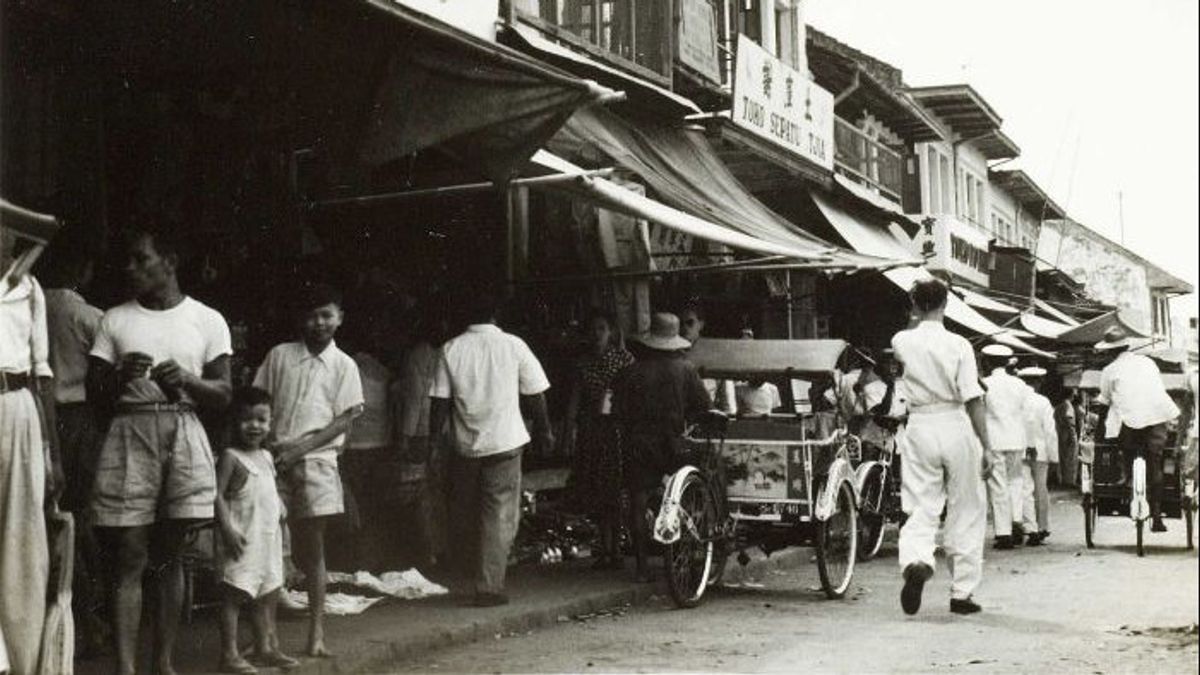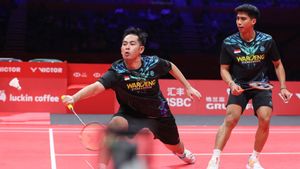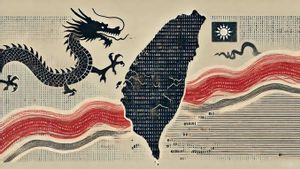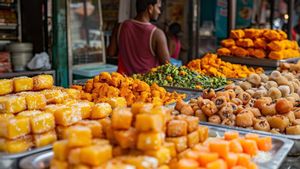JAKARTA - In the past, since it was built by the wealthy VOC employee Justinus Vinck in the colonial era in 1735, Pasar Senen in Niew Batavia, Weltevreden - now Central Jakarta - is like a small market. In fact, each building inside is only made of bamboo and has thatched roofs.
However, talking about the historical journey of the market that was once named Vinckpasser, Pasar Senen not only accommodates traders from all corners of the country, but there are times when the market becomes a place for artists to swing their existence.
It is noted that the changing movements of Pasar Senen, which is known as the home of Jakarta Artists, originated from the Japanese colonial period 1942-1945. The moment when the Senen area has become the heart of the city that never sleeps, Jakarta.
Quoting cultural observer Ajip Roshidi in his book, Reminiscing about the Lives of Others: A Number of Obituaries (2010). Ajip, in the book, explained that the phrase "Seniman Senen" was given to artists who like to gather in Senen.
“Seniman Senen is not an organization that has ever been founded by anyone. The term just arises to refer to a group of people who are associated as artists who like to gather in Senen, to be precise around the west end of Jalan Kramatbunder, "said Ajib Roshidi.
One of the Senen artists who often hung out at that time was the famous poet Chairil Anwar. His life is nomadic, he often moves from friend to friend. Chairil seemed never destined to be an office worker. Every day, Chairil's hobby is traveling and most often visits Senen Market.
The appearance of Chairil in Senen to meet fellow artists, was also immortalized by Sergius Sutanto in a novel entitled This Time Has No One Seeking Love (2017). In the book that reviews the artist's journey known as the Jalang's beast poem, the owner of the book tries to re-record the times when the pioneers of generation 45 were still familiar with Pasar Senen.
“The sun is almost setting. The street east of Harmonie was already deserted. I walked along Waterlooplein (Banteng Field) to Jalan Gunung Sahari and finally arrived at Pasar Senen, an area that is quite familiar to me since I lived not far from there. This area is home to immigrants, including those from West Sumatra, my mother's village. Shops and rows of colonial and Chinatown-style houses line the left and right. There are many food vendors on the side of the road, ”wrote Sergius Sutanto.
Not only came for a meeting, Chairil also often visited a flea bookstore in Senen which became the rendezvous of young intellectuals and underground fighters such as AK Gani and Chairul Saleh.
"That afternoon, I casually stopped by a used bookstore at Pasar Senen. Since the arrival of the Japanese, many Dutch books have been destroyed. Some of them were rushed into flea markets and sold at very cheap prices, ”he continued.
Apart from Chairil, the names of other famous artists who often hang out in Senen are none other than Sukarno M. Noor, Ismed M. Noor, Wim Umboh, Misbach Yusa Biran, and Wahid Chan who are often referred to as "Senen District Head" because of the frequent meetings in the region. the.
The locations where artists congregate in Senen also vary. From the roadside to the Padang restaurant, it is often chosen as the place to discuss books, films and theater. In line with that, Alwi Shahab, author of Maria van Engels: Men-in-law Habib Kwitang (2006), reveals the details.
"Behind the Avon Shop (now displaced) in the 1950s, there was the Padang Restaurant 'Merapi'. This is where the artists gather at night until just before dawn. They discussed theater and film life, ”said Alwi.
Apart from that, there is also another gathering place for Senen artists. Some of them are putu bakers who hang out near gas stations. Even if the Senen artists wanted to have a serious chat, they usually went to Kedai Tjau An to carry out a ritual discussion.
Admittedly an artist
Senen's popularity as a gathering place for artists made people who pretended to be real artists appear. On that basis, their presence has an impact on potential aspiring artists. This is because aspiring artists are often harassed, and they are often considered homeless.
The reason people often harass, is none other than the superiority of Senen artists who dared to try anything and indeed seemed crazy. For example, staging plays without capital, establishing new magazines, initiating monologues played by only one person, and even establishing educational institutions.
Unlike the average person, Misbach Yusa Biran sees this phenomenon as not a big problem. He believes that this is the main strength of the artist Senen. Therefore, these oblique connotations are mixed into an exciting story that can provoke laughter.
The stories of the madness of Senen's children - another name for Senen artists - are also summarized in a book containing a collection of anecdotes previously published in Aneka Magazine - around 1957-1959 - entitled Miracles in Pasar Senen (2007).
One of the anecdotes tells of a self-proclaimed artist named Asmar. In the anecdote, Asmar is depicted as being more of an artist than an artist. The problem is, not many people know about the form of work during his time as an artist at Senen. As a result, the author was curious and concluded that Asmar is "the only artist in the Pasar Senen area who is the most real artist: 100 percent, 24 carats."
This was revealed because he saw that Asmar really wanted to do nothing but think for art. Like it or not, the writer sacrificed a cigarette he owned to share with Asmar. The goal, as a mouthpiece so that the artist is willing to be candid about something that is blocking his mind.
Finally, Asmar admitted that he was only one of those who used Pasar Senen as a medium to wait for miracles. The miracle in question is in the form of reinforcements that can keep him alive for the following days.
Biran felt pity. The Rp5, which should have been rationed for tomorrow's cigarettes, was given to Asmar. At the same time, Asmar's face beamed and he said, “Well, do you believe it? Miracles do come, though only in part. Do you believe it? "
Such is Biran's story, which can provoke laughter from anyone who reads it. Because, through his work, people knew the life of the artists and people who acted as artists at that time.
Sadly, Senen's existence as an artist's house must come to an end. However, there are also not a few people who want to revive the space for artist creation by building a place similar to Senen. To the point that, former Jakarta Governor Ali Sadikin took part in making Taman Ismail Marzuki the new home of the Senen artist.
Unfortunately, these efforts were unsuccessful. The reason for this can be found in a fragment of the word pengatar from SM Ardan in a book written by Misbach Yusa Biran, Miracles in Pasar Senen:
But all the good efforts were unsuccessful. Why? Artists Senen gathered from the place 'Tjau An' to the bakers putu 'Cirebon' without having planned it beforehand. Just happen. Spontaneous. This spontaneity thwarted attempts to replace it. Yes, the glory of Senen is over. And Misbach has immortalized it in this book.
The English, Chinese, Japanese, Arabic, and French versions are automatically generated by the AI. So there may still be inaccuracies in translating, please always see Indonesian as our main language. (system supported by DigitalSiber.id)













